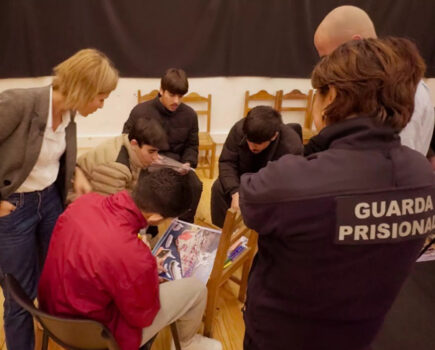UK fishermen will be able to fish for 30,000t of whitefish stock in Norwegian waters in 2024 following agreement on fishing opportunities in the bilateral talks between the UK and Norway that concluded on 15 December.
Whitefish vessels will also benefit from quota transfers from Norway to the UK of 700t of monkfish and 20t of blue ling.
In return, the UK will transfer to Norway 2,100t of whitefish from the West of Scotland (area VI), including 900t of ling, 400t of saithe and 450t of tusk. There are also smaller bycatch transfers of other species including cod (25t) and blue ling (100t).
The UK is also transferring 600t of Greenland halibut and 100t of bycatch stocks to Norway from area IIa (North Norway).
Pelagic vessels will be able to catch 20,000t of Norwegian spring-spawning herring in Norwegian waters, and Norwegian fishermen will be able to catch 20,000t of autumn-spawning herring in the North Sea in a mutual exchange.
The UK also receives 700t of Arctic/Norwegian cod, plus 100t of bycatch species.
Defra said the arrangements see ‘the continuation of the UK and Norway’s close partnership and aim to support a sustainable and profitable fishing sector, as well as providing continuity for industry’.
Mike Park, chief executive of the Scottish White Fish Producers’ Association, gave a cautious welcome to the deal, especially the transfer of 700t of monkfish to the UK. He said monkfish was a pressure species and the extra quota would be ‘useful for the fleet’.
But he said there was ‘a quid pro quo’ in that the UK had had to give up quota to achieve the monkfish transfer, and the boats that would lose that quota would not necessarily benefit from the monkfish transfer, so that created ‘some tension in the system’.
He also warned that in the future the UK would have to be ‘very careful’ about monkfish becoming jointly managed by the UK, EU and Norway – it is currently managed by the UK and EU.
“The EU got monkfish from Norway as well, 900t, while we got 700t. As we move into a jointly managed stock, we must be careful about allowing Norway to maybe up its percentage in terms of how much it should get out of the stock.
“At the moment it’s not jointly managed, but at some point Norway will come into that sharing argument, and by both us and the EU accepting monkfish from Norway, you wonder if when they come to settle percentages, Norway will try to claim a higher share than they have actually caught.”
He said it would also be good for monkfish to become an analytical stock, instead of its current data-poor category three status. “There’s a benchmark in February to model for analytical status, so it would be useful if that provides something different, so we can maybe see a sensible TAC being set for monkfish,” he said.
“It’s difficult to say whether the current model drives the level of TAC, but all things being equal it’s almost a race to the bottom, so breaking free from that will take away that negativity.”
Mike Park also welcomed the reciprocal access agreed that will allow the UK and Norway to catch 30,000t in each other’s zones.
“It’s right that we each have that access. Catches in each other’s zones have been pretty much balanced this year, with us both taking out the same sort of levels of fish.”
Fisheries minister Mark Spencer said: “Leaving the EU has presented us with the chance to seize the post-Brexit freedoms that are on offer, negotiating deals and implementing broader fisheries measures that will support our fishing industry towards a more profitable and sustainable future.
“Through negotiations this year, we’ve already secured deals to give our fishermen access to stocks worth £970m, and the arrangements with Norway will provide certainty and continuity, allowing fishermen to access important North Sea stocks such as cod, haddock and hake.”
The UK government said it has worked closely with the devolved administrations to ensure that all fishing communities across the UK will benefit from the agreement.
Faroe talks underway
Talks on a fisheries deal for 2024 with Faroe were continuing in the week before the Christmas break. Mike Park said he understood that the UK had sent Faroe a list of what it could give Faroe in UK waters, and that there would be an online meeting on 21 December.
“We hope they can get the deal concluded before the Christmas break, because some of species in there, Greenland halibut for example, is an early-year fishery, so the quicker they get a result, the quicker they can get access to the Greenland halibut.”
Faroe concluded bilateral agreements with both Norway and Russia ahead of the UK discussions. The deal with Russia confirmed quota reductions in line with ICES advice, albeit on overall quota shares that maintain the unilateral pelagic quota increase that Faroe awarded itself in defiance of previous NEAFC agreements.
This story was taken from the latest issue of Fishing News. For more up-to-date and in-depth reports on the UK and Irish commercial fishing sector, subscribe to Fishing News here or buy the latest single issue for just £3.30 here.
Sign up to Fishing News’ FREE e-newsletter here.








